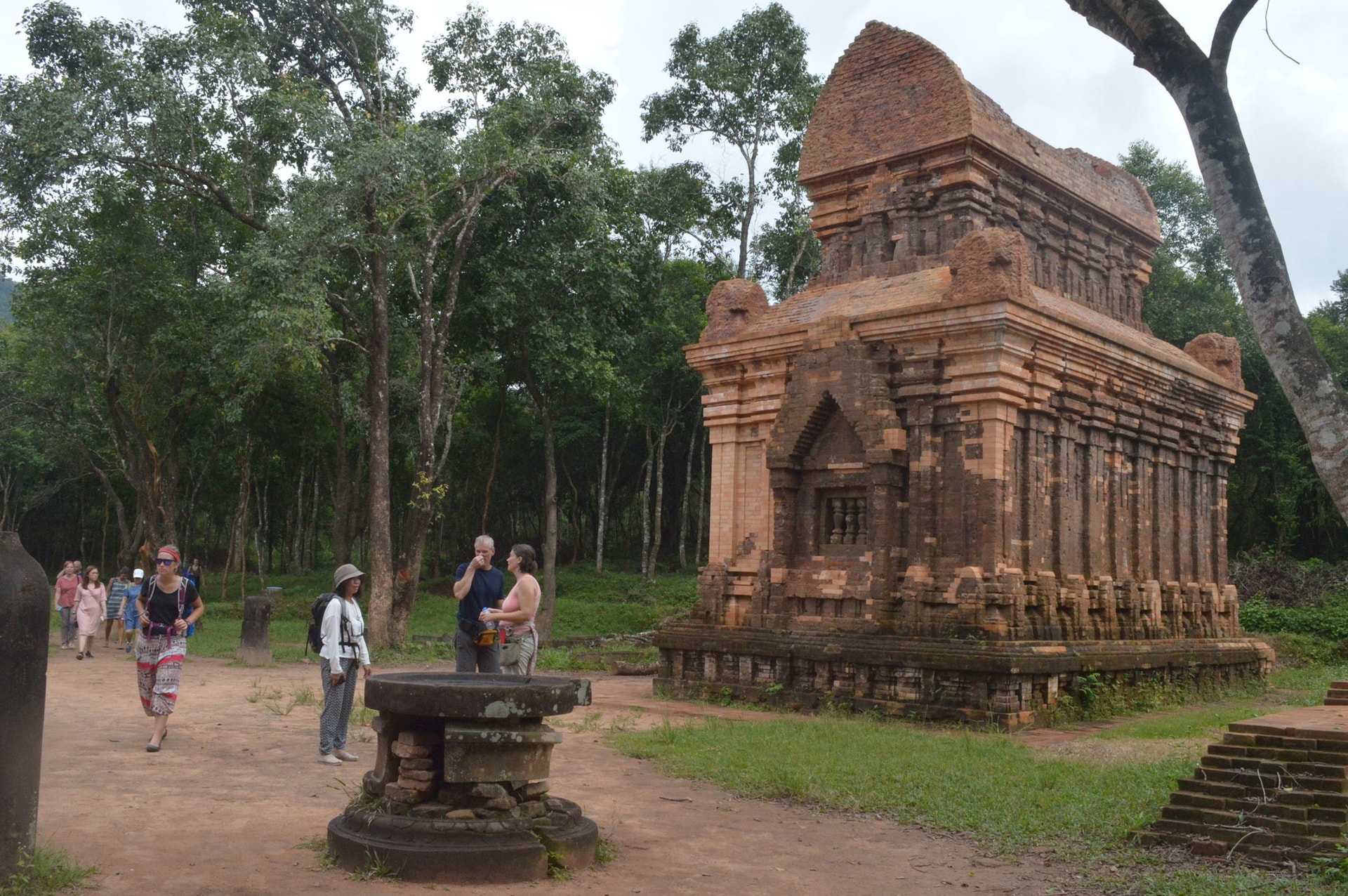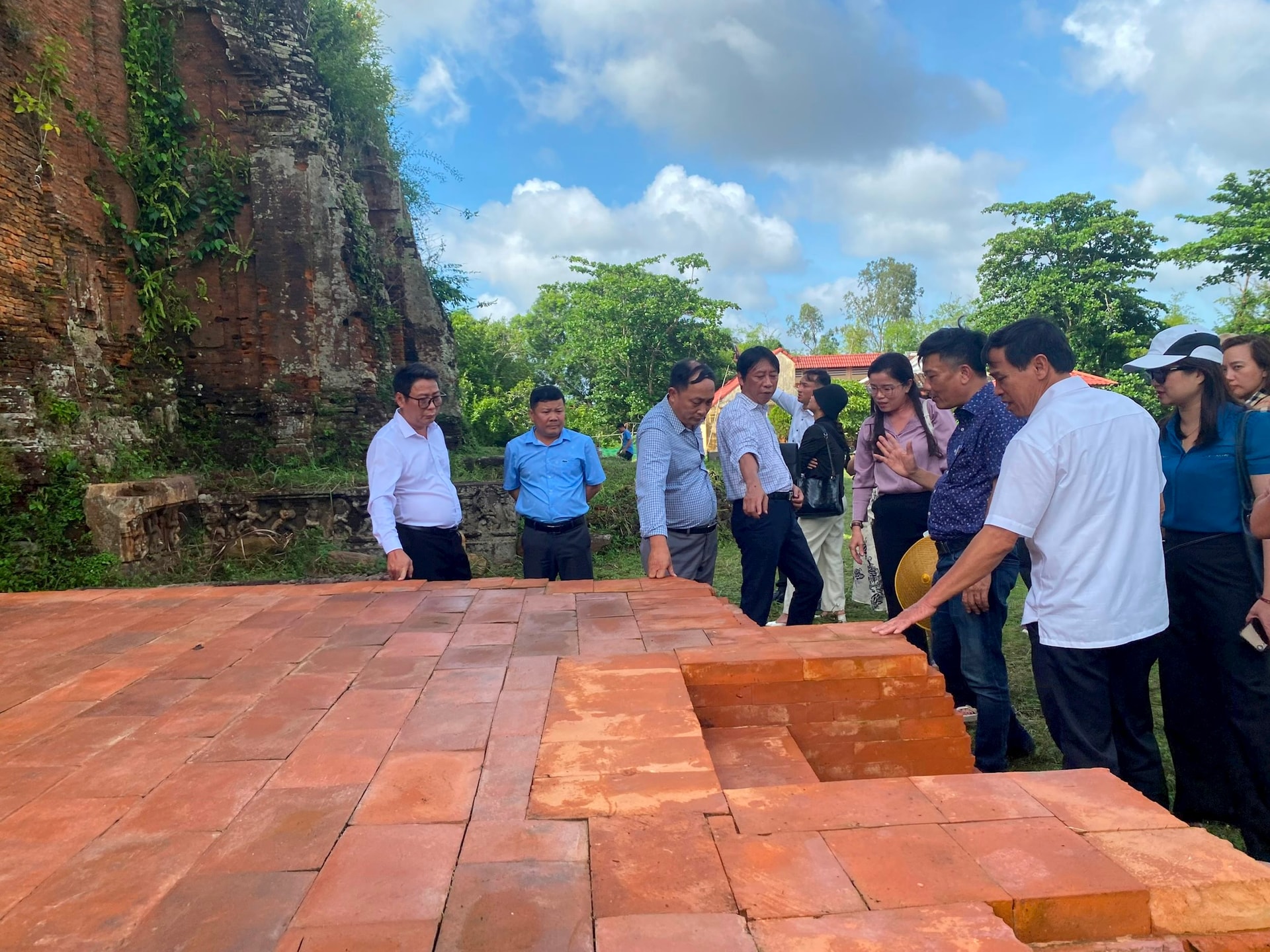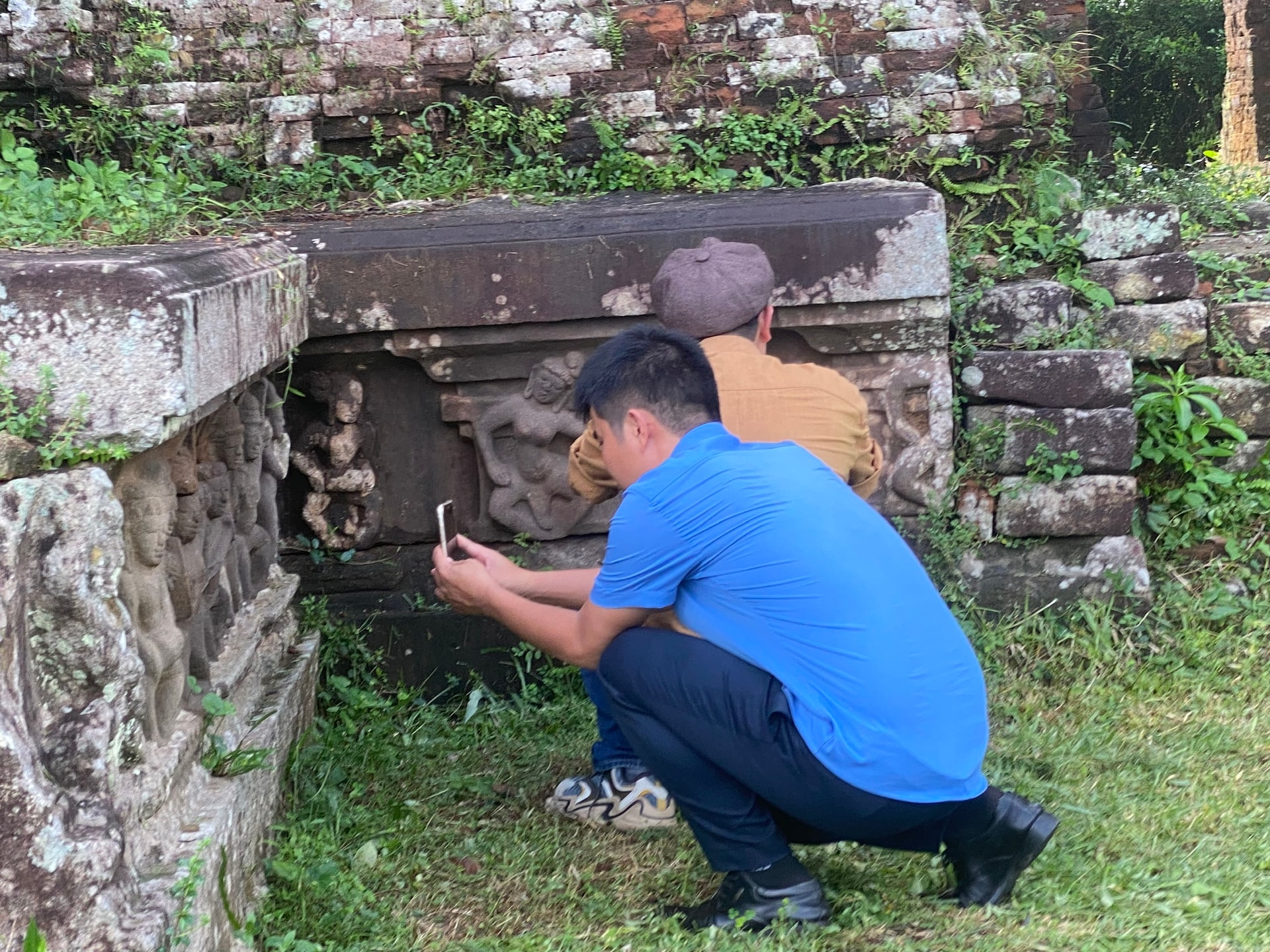
Tower protection technology
The My Son heritage site has more than 70 architectural works, most of which are in disrepair. In recent years, in addition to conservation and restoration work, the protection of the brick walls of the towers has always been a focus.
In the past 10 years alone, a series of experiments on protecting the surface of towers and outdoor sandstone architectural artifacts with otter oil have been continuously carried out by a team of domestic and international experts and staff, but the results have not yet met the requirements. After only a short time, mold, lichen, moss, and algae have reappeared on the surface of brick and stone materials.
Mr. Nguyen Cong Khiet - Director of My Son Cultural Heritage Management Board shared that if the restoration of temple towers must closely follow the original elements and comply with traditional methods, the preservation and protection of artifacts and architectural materials must apply appropriate and sustainable technology.
At My Son, among more than 1,800 sandstone, ceramic, and terracotta artifacts being preserved, in addition to being displayed at the My Son Museum and stored in warehouses, more than 700 artifacts are being displayed outdoors (including 31 steles), which poses challenges because the environmental conditions in the My Son valley are quite harsh.
For example, some artifacts mounted on the walls of towers D1 and D2 have shown signs of moisture, mold, and surface decay, with the risk of making the carvings unrecognizable.

According to Dr. Ha Thi Suong - Quang Nam Monuments and Museums Management Board, currently in the world there are many technologies applied to preserve artifacts and protect materials and relic surfaces.
For example, the GuardIndustry group (France) uses a product called Antimoss' Guard to help protect the original state and beauty of the relics. At the same time, this substance also helps the surface of the relics and artifacts to be self-cleaning, non-stick, prolonging the life of the material, and resisting all harmful environmental agents.
In addition, nanotechnology and 3D scanning can also be applied to protect artifacts and relic materials. In particular, nanotechnology, although quite expensive and relatively new in Vietnam, has shown quite good initial results through testing on some Champa temple brick samples, especially important artifacts such as stone stele inscriptions...
Technology cannot be separated from the preservation of artifacts and relics.
After the merger, Da Nang City became a locality with many Cham relics and ruins (estimated at more than 100 points). In addition to the world cultural heritage My Son or the national relics Khuong My, Chien Dan, Bang An, most of the remaining are ruins or archaeological remains such as Dong Duong Buddhist Institute, Go Vua, Trien Tranh, Cam Mit, An Son, Qua Giang, Xuan Duong, Phong Le...

Dr. Pham Van Trieu - Institute of Archaeology (Vietnam Academy of Social Sciences ) admitted that these are challenges because most archaeological ruins are made of brick and stone, which are easily weathered, cracked and damaged by microorganisms (fungi, mold, etc.). Therefore, the preservation of archaeological artifacts must be specifically analyzed indoors or outdoors to have solutions for protection and preservation.
“The preservation of these materials should be approached from two directions: from the relics and from the artifacts. However, no matter which direction, there are certain difficulties, especially in investing in equipment, materials, chemicals, etc. Preserving and conserving brick and stone materials is also the preservation of relics and artifacts of the archaeological industry, but currently in Vietnam it has only stopped at the basic level of treatment” - Dr. Pham Van Trieu shared.
According to Architect Dang Khanh Ngoc - Director of the Institute for Monument Conservation (Ministry of Culture, Sports and Tourism), monument conservation is considered a specialized scientific field, different from ordinary basic construction.
Therefore, outlining directions and determining appropriate conservation solutions based on fundamental theories and circumstances is extremely important to ensure correctness and effectiveness; prevent and limit factors that destroy relics without changing the original elements and authentic values of the relics before the impacts of the natural environment, including the social environment.
“The world’s advanced scientific research achievements in the preservation of relic materials are increasingly being widely applied, such as chemical, physical, biological methods, etc., bringing outstanding efficiency. In particular, the trend of preserving relic materials by chemical methods is one of the methods being researched and applied in Vietnam, initially showing positive signs of effectiveness, meeting strict requirements on preserving the integrity and ensuring increased sustainability for relics” - Architect Dang Khanh Ngoc informed.
Source: https://baodanang.vn/ung-dung-cong-nghe-bao-ton-di-tich-3265100.html



![[Photo] The 4th meeting of the Inter-Parliamentary Cooperation Committee between the National Assembly of Vietnam and the State Duma of Russia](https://vphoto.vietnam.vn/thumb/1200x675/vietnam/resource/IMAGE/2025/9/28/9f9e84a38675449aa9c08b391e153183)
![[Photo] Joy on the new Phong Chau bridge](https://vphoto.vietnam.vn/thumb/1200x675/vietnam/resource/IMAGE/2025/9/28/b00322b29c8043fbb8b6844fdd6c78ea)


![[Photo] High-ranking delegation of the Russian State Duma visits President Ho Chi Minh's Mausoleum](https://vphoto.vietnam.vn/thumb/1200x675/vietnam/resource/IMAGE/2025/9/28/c6dfd505d79b460a93752e48882e8f7e)




























![[Photo] President Luong Cuong receives Chairman of the State Duma of the Russian Federation Vyacheslav Volodin](https://vphoto.vietnam.vn/thumb/1200x675/vietnam/resource/IMAGE/2025/9/29/6bd456e072504df3a468acbf9b7989c8)

































![[Photo] President Luong Cuong receives Chairman of the State Duma of the Russian Federation Vyacheslav Volodin](https://vphoto.vietnam.vn/thumb/402x226/vietnam/resource/IMAGE/2025/9/29/6bd456e072504df3a468acbf9b7989c8)



































Comment (0)